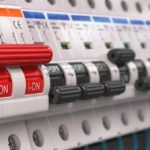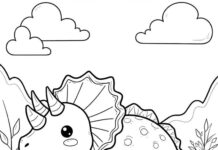A fan is a commonly-used electrical device, especially during hot sunny days. Many people wonder how much electricity a fan consumes when it is turned on 24/7.
1 Electricity consumption when a fan is turned on all day
 Electricity consumption when a fan is turned on all day
Electricity consumption when a fan is turned on all day
A YouTube account used a specialized device to measure the specific power consumption of a fan. This person noted that older fans may have increased power consumption due to wear and tear.
Based on the packaging information, the fan used in the experiment has a power rating of 40W, meaning it consumes 40W of electricity per hour. Surprisingly, when measured, the fan consumed up to 58W at the highest wind speed and 47W at the lowest speed.
On average, this fan consumes about 55W. When used continuously for 24 hours, the fan consumes 1.3 kWh (equivalent to 1320W). With current electricity prices, the cost of using the fan for one day is about 2000 VND, and for one month it is about 60000 VND.
The power consumption of a fan depends on its rating. Fans with higher power ratings will consume more energy. It is also worth noting that the actual power consumption may differ from the rating mentioned on the packaging.
 Energy label on the fan
Energy label on the fan
The energy label on a fan indicates its energy-saving capability. A higher number of stars on the label signifies better energy efficiency.
2 Tips for using energy-saving fans
 Tips for using energy-saving fans
Tips for using energy-saving fans
Choose a fan with appropriate power and speed
Using a fan at high wind speeds increases its power consumption. Avoid keeping the fan at maximum speed and consider adjusting it to medium or low speeds after a period of time or at night.
For small spaces with few people, one fan provides enough cooling. In larger spaces and crowded areas, consider using a ceiling fan as they have larger blades, providing better cooling and saving energy.
Additionally, using a small fan along with an air conditioner set at around 27 degrees can effectively cool larger spaces while saving energy.
Avoid using multiple functions simultaneously
Modern fans often have additional functions like lighting or misting. However, it is best to avoid using multiple functions at the same time unless necessary to prevent energy wastage.
Unplug the fan when not in use
 Unplug the fan when not in use
Unplug the fan when not in use
Simply turning off the fan in the usual way does not completely cut off power consumption. It still consumes a certain amount of energy. Therefore, unplug the fan if it will not be used for a few hours or a long period. If you want to use the fan overnight or when you are away, utilize the timer function if available.
Maintain or replace old fans
 Maintain or replace old fans
Maintain or replace old fans
As fans age, their power consumption and monthly costs increase. Dust on fan blades reduces cooling efficiency. Therefore, it is important to regularly maintain, clean, or replace the fan if it shows signs of damage.
Above is an article about the electricity consumption of fans when they are turned on 24/7. We hope this information has been useful to you.




































